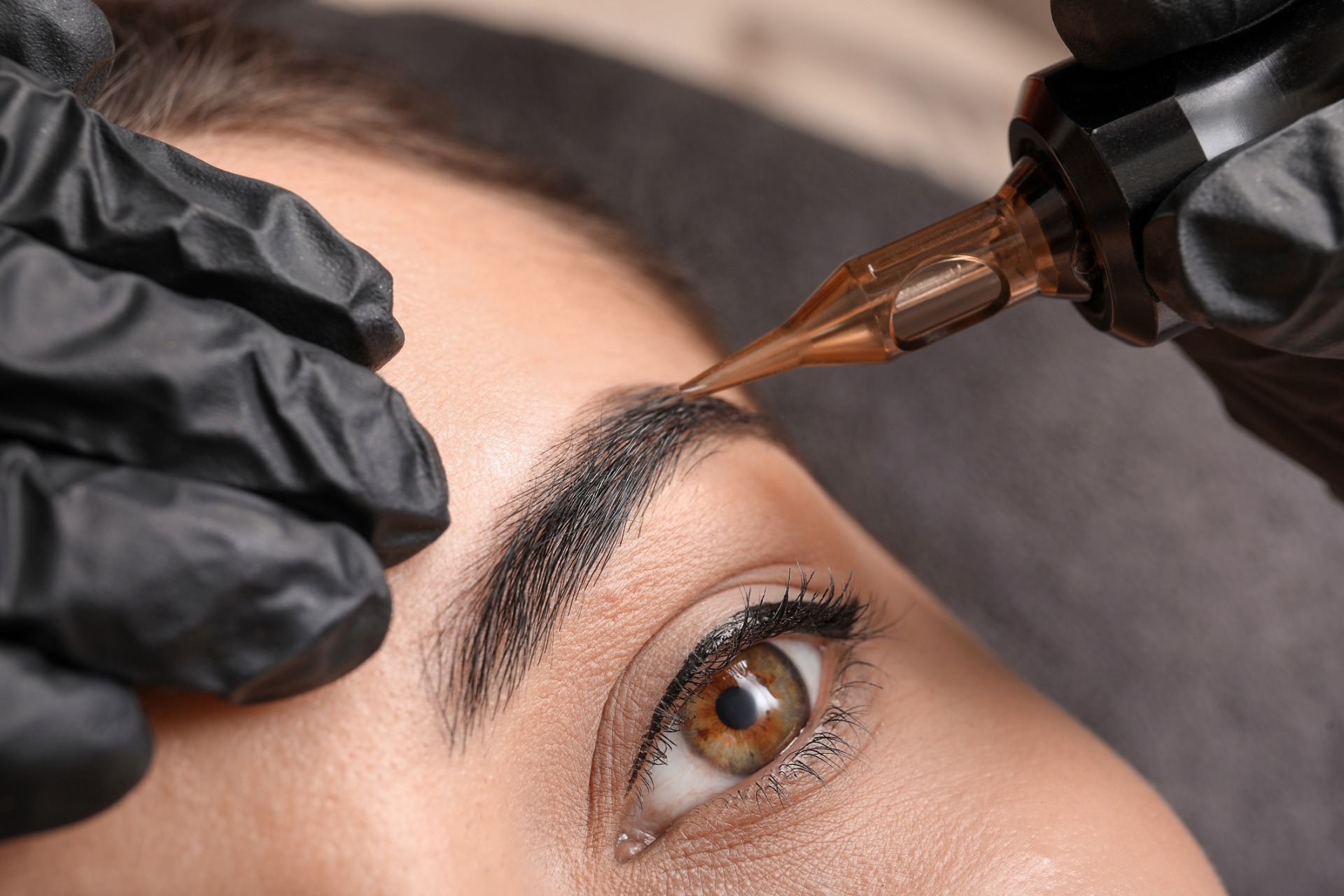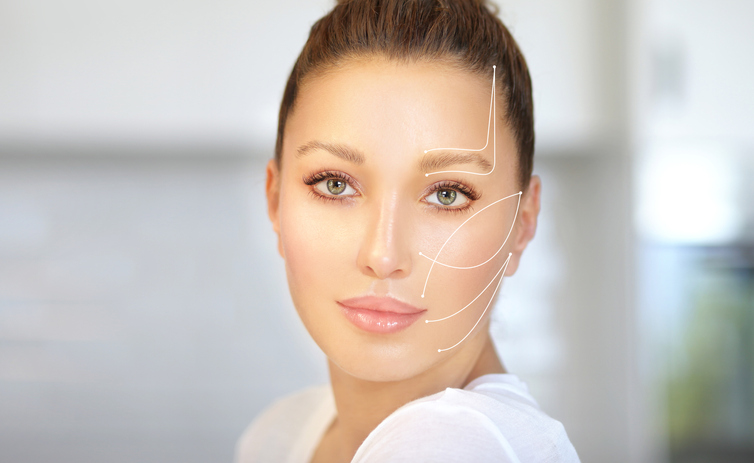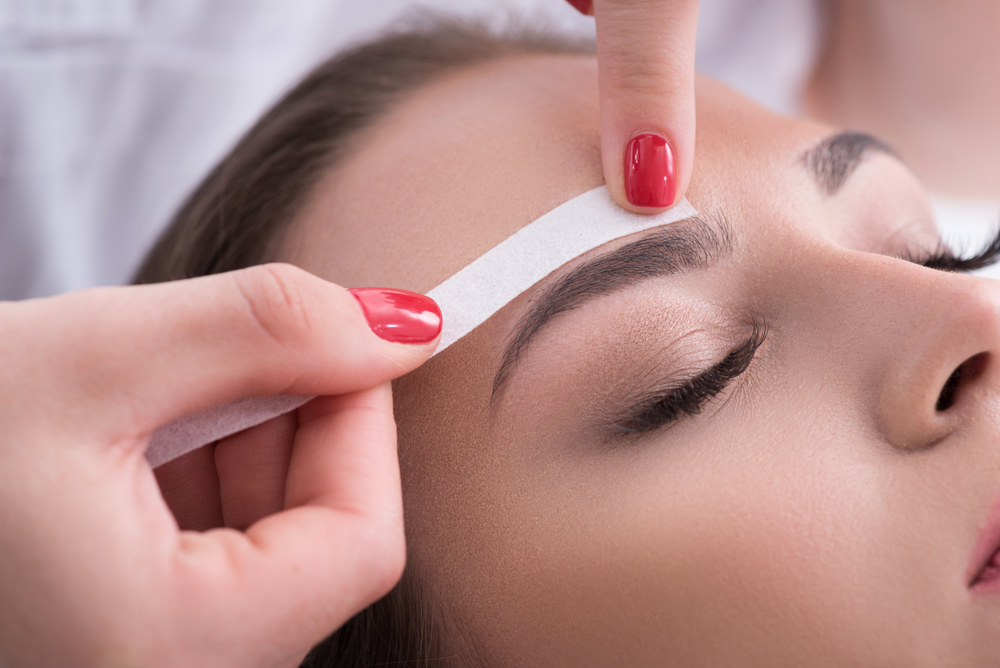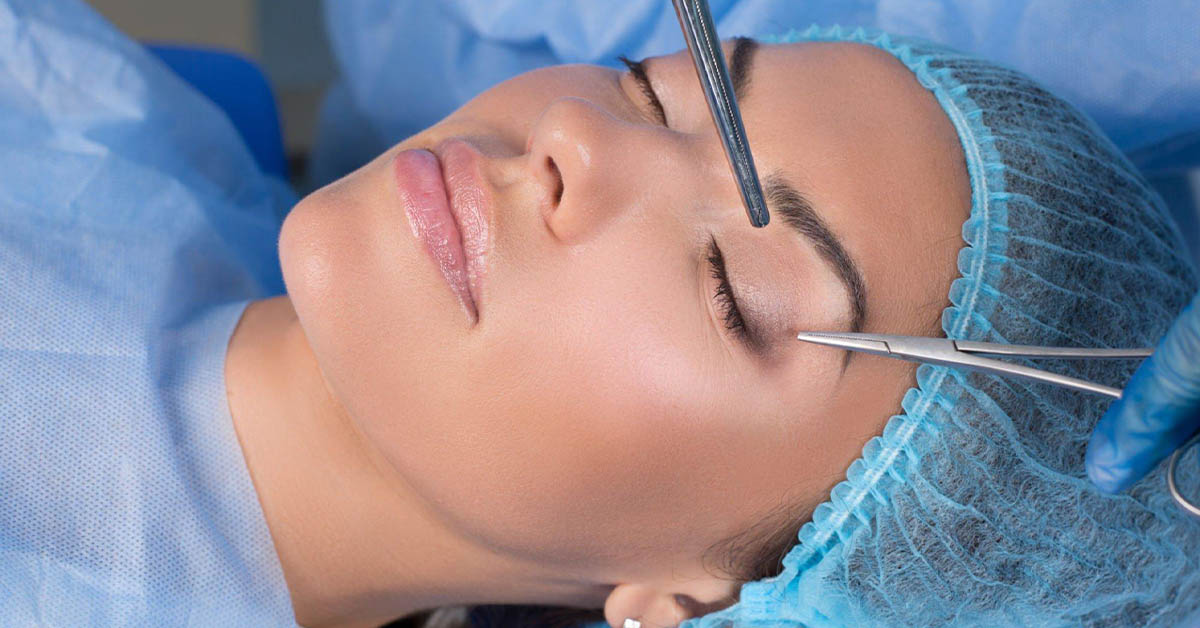In an age where the quest for a youthful visage is more prevalent than ever,…

Eyebrow Micropigmentation vs. Microblading: What’s the Difference?
There are many reasons to consider having a cosmetic eyebrow procedure done. Eyebrows can become thinner or misshapen over time or due to over-plucking, and you may wonder if there’s anything you can do to restore them. Or perhaps you’re dealing with hair loss from an illness or surgery or have experienced trauma to the area.
Whatever your reasons are, cosmetic eyebrow procedures like micropigmentation and microblading can restore eyebrow fullness, filling in sparse areas and improving their overall shape. Read this article to learn more about micropigmentation and microblading, the differences between them, and how to choose which one is right for you!
Micropigmentation and Microblading: An Overview
Now that we’ve discussed some of the reasons for getting an eyebrow cosmetic procedure, let’s take a look at micropigmentation and microblading. Here’s an overview of them both.
Eyebrow Micropigmentation
The main goal of eyebrow micropigmentation is to add pigments to your eyebrows and fill in patchy areas by using a digital machine equipped with tiny needles. The eyebrows and desired look are outlined, then the machine deposits pigments into the epidermis (outer skin layer). The result is a thicker, yet still very natural-looking eyebrow.
Micropigmentation is semi-permanent, lasting typically from two to five years, though sometimes up to eight. The fading process is gradual, with the pigment gently growing lighter in color over time. It’s a good option for people who want a subtle and natural-looking eyebrow appearance.
Eyebrow Microblading
Eyebrow microblading, on the other hand, actually uses a handheld tool with small needs to scratch tiny lines to your skin. These lines are made to mimic your eyebrow hair strokes and are then filled with pigment.
Microblading is also semipermanent, but doesn’t last for as long as micropigmentation does. Typically, microblading will last for a year to a year and a half, depending on your skin and whether or not you have touch-ups done. However, it’s important to note that results can sometimes last longer.
What Are the Main Similarities Between the Two?
While the processes and results of micropigmentation and microblading do vary, both treatments are similar in several ways. These similarities include the following.
Both Can Enhance Your Eyebrows
Both micropigmentation and microblading can help fill in your eyebrows if they’re sparse or require enhancement due to illness or surgery.
Both Are Semi-Permanent
Both procedures offer semi-permanent results, lasting typically between one to three years, depending on factors like your skin type and aftercare.
Both Allow for Eyebrow Customization
Another perk of micropigmentation and microblading is that you can work with a technician to tailor the shape and color of brows to your exact preferences.
Both Are Performed by a Certificatied Professional
Whether you choose micropigmentation or microblading, you can rest easy knowing that both are performed by certified and experienced professionals to ensure safety and optimal results.
What Are the Main Differences Between the Two?
Now that you know the main similarities between micropigmentation and microblading, here are some of the differences.
The Technique and Tool Used
Microblading involves using a manual hand-held tool with fine needles to create hair-like strokes by cutting into the skin’s surface and depositing pigment.
Micropigmentation, on the other hand, uses a machine to implant pigment into the skin using a stippling motion, resulting in a more shaded or powdered appearance.
The Results Produced
Micropigmentation and microblading also achieve different results, so it’s important to understand the difference between the two to select which one is right for you. Microblading tends to look a bit more natural due to the stroke-like technique used. However, if you desire a soft, shaded look to your grows, micropigmentation is better.
Your Pain Tolerance
You may be wondering if microblading and micropigmentation are painful. Despite the scratching technique, microblading is usually a bit less painful since it is on the surface of the skin. Micropigmentation, on the other hand, tends to penetrate a bit deeper into the epidermis and thus can cause pain.
How Do I Choose Between Micropigmentation or Microblading?
So how do you choose between micropigmentation and microblading? Here are some important considerations to take into account when deciding which to pick.
Your Desired Appearance
One of the key factors to consider when choosing between the two is your desired eyebrow appearance. If you’re looking for subtle, natural results, microblading is typically the best option.
If you’re looking for a more natural and subtly defined appearance, microblading might be the better choice. Microblading creates fine, hair-like strokes that mimic the look of real eyebrows, making it suitable for individuals with thin or sparse eyebrows who want a softer and more realistic enhancement.
For those who typically wear more makeup or favor a bolder look, micropigmentation can offer a shaded, polished appearance to your eyebrows. It’s a more dramatic look than microblading but can be a great choice nonetheless.
Your Pain Tolerance
Another thing to consider when choosing is your pain tolerance! If you’re quite sensitive to pain, it may be best to opt for microblading, as micropigmentation’s deep skin penetration can sometimes be rather painful.
Your Skin Type
One factor many people don’t consider when choosing between microblading or micropigmentation is how skin type can affect the results.
Dry skin is typically the best for microblading, because dry skin will absorb more pigment than oily skin will. Oily skin tends to push out pigment fast, so more frequent touch-ups will be required. In addition, if you have very rough skin, microblading can be difficult.
When trying to decide between microblading or micropigmentation, it is always best to book a consultation with a skilled and experienced technician! They’ll be able to chat with you about your goals and preferences, as well as show you pictures of work they’ve done before.
If you’re interested in eyebrow micropigmentation or microblading, reach out to Vargas Face & Skin Center. We’ve been in business since 2011, helping each of our clients achieve their aesthetic goals. Book a consultation with us now!








This Post Has 0 Comments